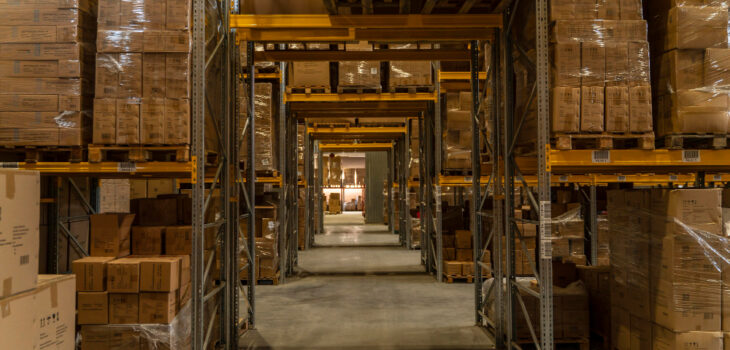 Business
Business
How Warehouses Drive Efficiency and Innovation in the Supply…
In the fast-paced world of logistics and e-commerce, warehouses play a crucial role in ensuring that goods move smoothly from manufacturers to consumers. From storing products to managing inventory and facilitating order fulfillment, warehouses are at the heart of every efficient supply chain. Whether you’re a business owner, a logistics professional, or just curious about the role of warehouses, understanding their functions and importance is key to appreciating how goods get from point A to point B.
In this blog, we will explore the key functions of warehouses, the different types of warehouses, and how they contribute to a streamlined and efficient supply chain.
What Is a Warehouse?
A warehouse is a large, secure facility where goods and products are stored before they are distributed, sold, or further processed. It serves as a storage space, but its role extends far beyond just keeping items in one place. Warehouses are central hubs for inventory management, order fulfillment, and logistics operations, ensuring that businesses can meet customer demands in a timely and efficient manner.
Key Functions of a Warehouse
-
Storage of Goods
The most fundamental function of a warehouse is storage. Companies store raw materials, finished products, or intermediate goods in a warehouse before they are distributed to retailers, wholesalers, or directly to consumers. Proper storage helps prevent damage to products and ensures that they are readily available when needed.
-
Inventory Management
Efficient inventory management is critical for any business. Warehouses help track the quantity, location, and condition of goods. Modern warehouses often use sophisticated technology such as barcodes, RFID tags, and inventory management systems to monitor stock levels and ensure that products are replenished in time to avoid stockouts or overstocking.
-
Order Fulfillment
Order fulfillment is a core activity in warehouses, especially with the rise of e-commerce. Once an order is placed, warehouse staff pick, pack, and ship products to the customer. In many cases, this process is automated through systems that can quickly identify and retrieve items based on customer orders. Efficient order fulfillment is key to customer satisfaction and helps businesses stay competitive.
-
Sorting and Packaging
In many warehouses, products are sorted based on various factors like size, weight, or destination. Sorting ensures that goods are organized in the most efficient way for easy access and faster dispatch. Packaging is also a key function, ensuring that products are packed securely for transit and storage.
-
Distribution and Shipping
Warehouses serve as distribution centers, facilitating the shipping process by preparing goods for transportation. Once products are packed and labeled, they are ready for shipping to retailers, wholesalers, or direct customers. Warehouses often work closely with third-party logistics providers (3PLs) to ensure timely and cost-effective delivery.
-
Returns Processing
With the rise of online shopping, returns have become an integral part of the warehouse process. A warehouse is often where returned items are inspected, restocked, or refurbished before being resold. Efficient returns processing is crucial for maintaining customer satisfaction and managing reverse logistics.
Types of Warehouses
There are several types of warehouses, each designed to meet the specific needs of different industries or types of goods. The most common types include:
-
Public Warehouses
Public warehouses are operated as independent facilities and are available for use by multiple businesses. They are often used by small to medium-sized companies that don’t have the resources to manage their own warehouse. Public warehouses provide flexible storage options and allow businesses to rent space on a short-term basis.
-
Private Warehouses
Private warehouses are owned and operated by a single company, typically for its exclusive use. Large companies with high storage needs often have private warehouses to manage their inventory. These warehouses provide more control over the storage and distribution of goods, but they come with higher operational costs.
-
Distribution Centers
Distribution centers (DCs) are specialized warehouses designed specifically for the rapid movement of goods. Unlike traditional warehouses that focus primarily on storage, DCs are optimized for fast order fulfillment and shipping. They often feature advanced automation and real-time inventory tracking to speed up processing.
-
Fulfillment Centers
Fulfillment centers are a type of warehouse focused on e-commerce order fulfillment. These centers store goods and handle all the steps involved in fulfilling an online order, including picking, packing, and shipping. Fulfillment centers often work with third-party logistics providers to ensure fast and accurate deliveries.
-
Climate-Controlled Warehouses
Some products, like food, pharmaceuticals, or certain chemicals, require special storage conditions. Climate-controlled warehouses maintain a specific temperature and humidity level to preserve the quality of sensitive goods. These warehouses may feature refrigeration units, air conditioning, or heating systems depending on the type of product being stored.
-
Bonded Warehouses
Bonded warehouses are facilities where imported goods are stored until customs duties and taxes are paid. These warehouses are typically used for international trade and allow businesses to defer the payment of duties until the goods are ready for distribution.
How Warehouses Contribute to the Supply Chain
-
Streamlining Operations
Warehouses act as crucial hubs in the supply chain, allowing businesses to store and manage goods before they are sent to retailers or customers. By centralizing the storage of goods, warehouses enable companies to operate more efficiently and reduce delays in the distribution process.
-
Cost Efficiency
Warehouses help reduce costs associated with inventory management, shipping, and storage. By using automation and efficient warehouse management systems (WMS), businesses can optimize space, minimize waste, and streamline order fulfillment, ultimately lowering operational costs.
-
Improved Customer Service
A well-organized warehouse can significantly improve customer service by ensuring that products are readily available for timely delivery. With real-time inventory tracking and fast order fulfillment processes, warehouses enable businesses to meet customer demands quickly and accurately.
-
Flexibility in Inventory Management
Warehouses give businesses the flexibility to adjust inventory levels based on seasonal demand or market trends. Having a dedicated space to store goods allows companies to respond quickly to changes in customer preferences or supply chain disruptions.
The Future of Warehouses
As e-commerce continues to grow, the role of warehouses is becoming even more important. Warehouses are evolving to incorporate automation, robotics, and artificial intelligence (AI) to improve efficiency and reduce human error. Technologies like autonomous robots, drones for inventory management, and automated picking systems are helping warehouses speed up processes and reduce labor costs.
Furthermore, with the increasing focus on sustainability, many warehouses are adopting green practices such as energy-efficient lighting, renewable energy sources, and optimized packaging to reduce their environmental impact.
Conclusion
Warehouses are the unsung heroes of the modern supply chain. They serve as the crucial link between manufacturers, retailers, and consumers, ensuring that goods are stored, organized, and shipped in the most efficient way possible. From traditional storage facilities to state-of-the-art fulfillment centers, warehouses are constantly evolving to meet the demands of a globalized and fast-paced marketplace. By understanding the role and function of warehouses, businesses can optimize their operations, reduce costs, and improve customer satisfaction. As technology continues to advance, the future of warehouses looks promising, with automation and AI leading the way toward even greater efficiency and innovation.








